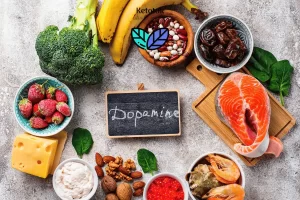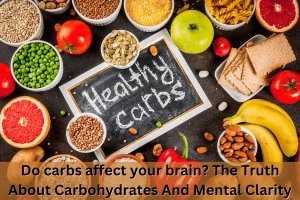Nowadays, many people intend to start a new diet and lifestyle. Either for higher energy or to create positive habits. The most common reason is for fat burning.
Popular amongst North Americans, the Ketogenic diet is known for its low-carb and high-fat meals intended to induce a state of ketosis in the body. In other words, it obligates the body to use fat as an energy fuel instead of carbohydrates.
Here I base my explanation on the book “Keto for Life”, by Mark Sisson and Brad Kearns. In this article, we’re going to understand how this primal kitchen enhances Healthspan. I hope you enjoy this detailed overview of every section of the book to get you excited about transforming your health with this ancestral health movement!
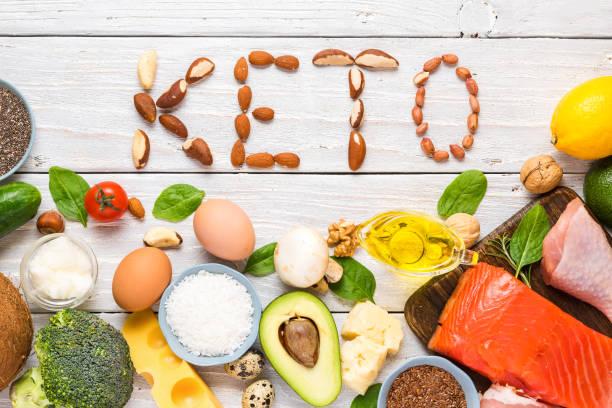
The 4 Pillars of Keto are:
Known as a medical treatment for epilepsy in 1924 by Dr. Russell Wilder, the ketogenic diet has gone through modifications. Popularized nowadays as a diet for fat burning is Mark Sisson’s and Brad Kearns’s, the keto diet considers mental health and longevity issues.
For a long time, they had to obtain a deep education and scientific rationale for the 4 pillars’ creation.
Pillar #1 Achieve Metabolic Flexibility with Keto for Life
We are going step-by-step to implement the keto diet. The first step in understanding the ketogenic lifestyle is to know metabolic flexibility.
What is Metabolic Flexibility?
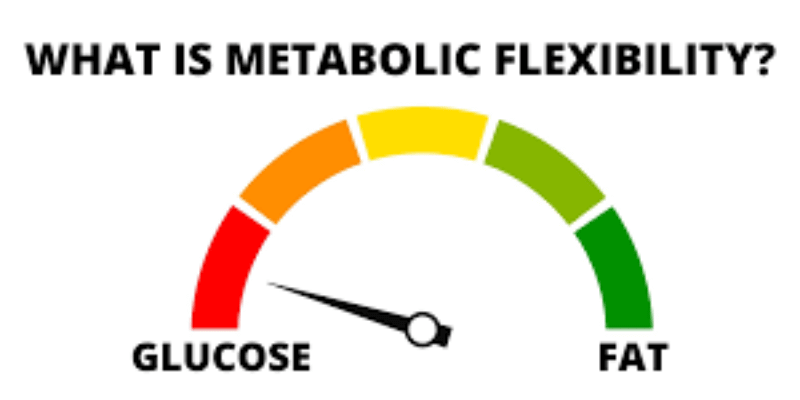
Having metabolic flexibility means that your body can use whatever fuel is available to keep working.
If you have eaten recently, your body will use the recent food as a source of energy production. But if you don’t consume anything in a while, your metabolism will burn already existing fuel in your body — such as fat and sugar.
The capability of switching between energy sources makes your body more efficient in the long term. So, if you need to go through long periods without food, it won’t be a problem since your body knows how to use other sources to provide energy for you.
How Keto Improves Metabolic Flexibility
As said, the keto diet focuses on stored fat burning as a prior energy source for daily activities. Through this process, the flexibility of your metabolic system will be improved.
A way of applying it for better metabolic flexibility is through cyclical ketosis. Basically, it involves eating a higher quantity of carbs in a day (around 100g) of the week to compensate for the other 6 days without it.
Applying this method not only provides the carbs needed for your body but also keeps your system capable of digesting it with no negative reaction.
Tips from Mark Sisson and Brad Kearns
As a person who walks his talk, Mark Sisson understands the difficulties of starting a new routine with new habits. Following the principles of ketogenic diet, he gives some tips for beginners:
- Don’t be hungry, go primal
Transitioning from an unruled state into a disciplined method is not easy. In the first three weeks, it’s not uncommon for people to struggle with keto flu; a period where the brain goes into glucose abstinence, affecting your mood and body.
To get used to the kenosis state, he recommends always having healthy snacks when you feel hungry until your brain gets used to the idea of consuming only, at most, 120-150 grams of carbs per day. This is called “primal”, a pre-stage for keto.
- Adapt your breakdown
Still, on primal, he suggests an adjustable division of nutrients in the meals. Your days must include 50 grams of carbs total, 0.7-1.0 grams of protein per pound of lean body mass, and as much fat as needed for you to feel satisfied.
Feel free to consume the suggested foods as you want, it’s just important to respect that basic rule.
- Sugar-free for a longer life
The high dependency on sugar within the high processed food consumption on present days is a greater contributor to inflammation. In the worst scenario, people might develop heart disease or arthritis due to this consumption.
So, when you reduce or cut off the ingestion of these foods, you’re most likely susceptible to living a longer and better life.
Pillar #2: Incorporate Movement and Physical Fitness

Just like other diets, keto also requires a level of physical activity. The human being genetic expectations for health involve mobility, even if it is just a daily walk. However, modern life brings some stillness to our routines due to convenience and comfort.
Exercising on keto not only provides the loss of body fat, but with the combination of movement and physical fitness exercises, you’ll create a daily longevity routine that provides healthy aging.
How Exercise Impacts Keto Success
By doing exercises, you make it significantly easier for your body to enter the ketosis state. And, as previously seen, this process leads to faster weight loss.
The reason it works so well is that the glycogen supplies — in other words, the glucose produced by your body’s carbohydrates — of your body run out as you work out. Aligned with a low-carb lifestyle, the effects will be enhanced.
But you must beware: the more intense the exercise, the higher levels of glycogen are necessary to boost the results.
Sample Workouts to Pair with Keto
For keto, there are three possible exercise types you can do:
- Low-Intensity Steady State Cardio (LISS)
Considered more tolerable than HIIT, the continuous state of these aerobic exercises is meant to maximize the burn of calories. Further, it also results in better oxygen delivery to cells through a higher blood flow.
Some LISS exercises are jogging, running, cycling, cardio machines — such as elliptical and treadmill —, and swimming.
- Resistance Training
Building muscles in ketosis is not impossible, since they also rely on your body’s glycogen.
In this modality, consider going for lifting weights, squats, sit-ups, pushups, or bodyweight exercises.
- High-Intensity Interval Training (HIIT)
Although more tiring than LISS, it’s possible even for beginners to do HIIT exercises during ketosis. Respecting the limit of 30-50 grams of carbs for some weeks leads your body to burn fat more effectively.
Acknowledge the importance of constancy in your diet. Look forward to high-impact exercises, such as burpees, sprints, mountain climbers, circuit training, and CrossFit.
Mobility Exercises for Flexibility
Meant to enhance your limbs’ movement, mobility exercises influence flexibility and impact on the prevention of injuries.
When you work on your joint strength, you increase your overall efficiency in performing intense exercises. So, remember: longevity prospects depend on an active body.
The practice of this modality is fundamental as a pre-workout for any other modality — mainly resistance training. Consider adding 10 minutes to your daily workout of the exercises.
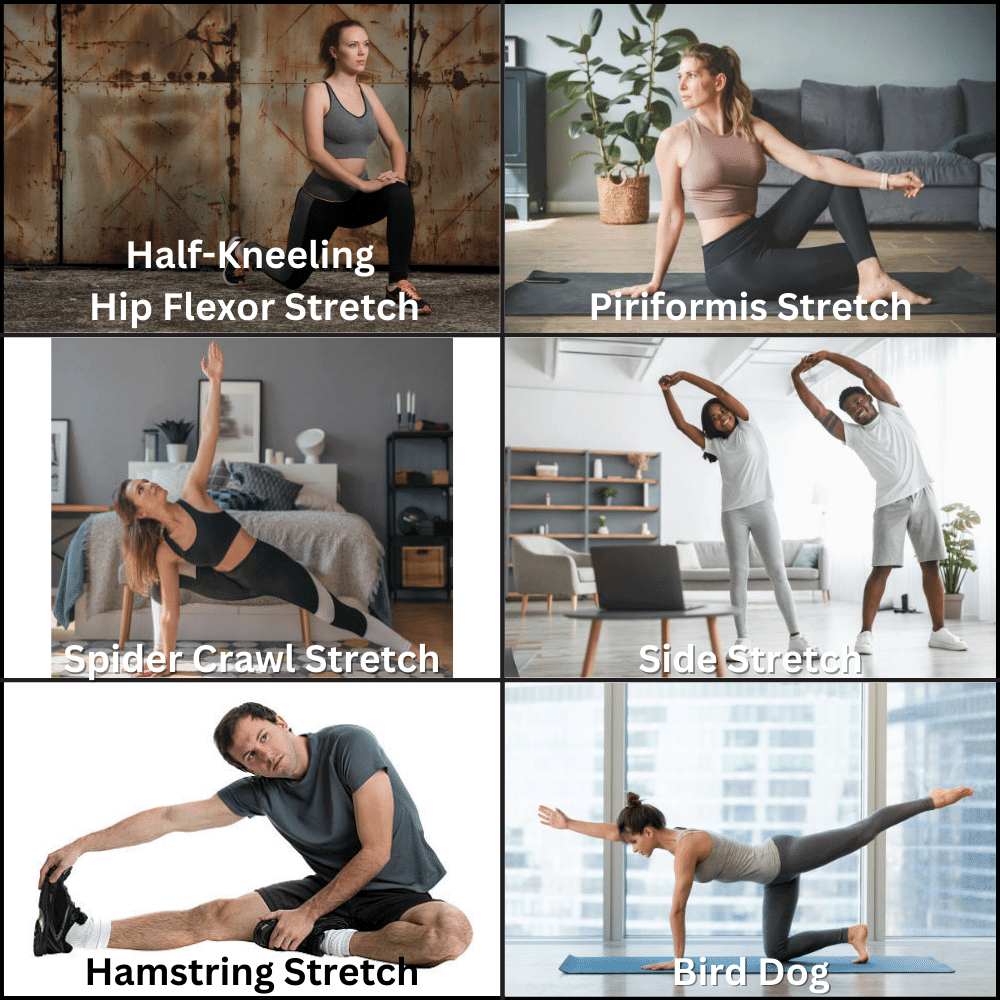
Pillar #3: 21-DAY BIOLOGICAL CLOCK RESET
Another important pillar is to reset your biological clock. Basically, it means adapting your body to escape carbohydrate dependency.

According to Maxwell Maltz, an American plastic surgeon, 21 days is the necessary period for the brain to absorb and process habits to change. It is determinant for you to strictly stick to the low-carb lifestyle to develop a daily longevity routine that feels natural.
What the 21-Day Reset Involves
This 21-day biological clock reset brings elements from all the pillars of longevity settled by the ketogenic diet. Even though it’s a short period, this reset highly demands personal discipline and focus.
The idea behind it is to expose yourself to a range of strategies of keto that you’ll adhere to as you please. It can be used as a testing period for you to understand what works and what can be excluded from your routine on a ketogenic diet.
Optimizing Your Diet for Longevity
Aging is unavoidable, but it is up to you to decide whether to do it healthily or not. Longevity does not depend only on healthy eating; it also relies on a good mental state, getting rid of excessive body fat, and having a good sleeping schedule.
Within 21 days, the 4 pillars of the ketogenic diet will be worked on from different perspectives. This optimal health plan also includes an analysis of the relationship between hyperconnectivity and interpersonal relationships. It might sound improbable, but these two factors also affect the brain’s cellular activity in the long term.
Sleep and Stress Management
Technology’s fast responsiveness is handiness; however, it affects how people work. To compensate and keep pace with it, the human being developed an immediacy over life. All the rush present in our days causes huge amounts of anxiety and stress.
When thinking of the ketogenic diet, Mark Sisson understood the need for rest and stress management. Disciplining the use of technology, taking breaks from peak cognitive function to refresh brain neurons, and how to enjoy a good sleep when needed.
When looking for a better life quality, you must also consider relaxation and rejuvenation. As suggestions, Sisson talks about recovery-centric workouts — like yoga and meditation.
Pillar #4: Develop Mental Flexibility

As important as metabolic flexibility is mental flexibility. Working on mental strength is decisive for developing focus and resilience.
Sisson looked forward to exploring the sources for negative feelings — called “state of ruminating” by the author —, and how to cultivate mindfulness instead.
Keto Clarity for Improved Cognition
Up to this date, this diet has been used to treat different mental health and brain conditions — Alzheimer’s, Parkinson’s, epilepsy, bipolar disorder, and even depression.
Some studies affirm that the excessive consumption of refined carbs and industrial vegetable oils can damage brain function. Ditching these items avoids inflammations in the system.
According to a 2016 search on glycogen metabolism by BBA Clinical, carbohydrate (glucose) consumption is unnecessary for the brain’s survival. The minority of your cells depends on glucose to work, and the liver produces glucose by the breakdown of proteins and lipids (fat).
When your body starts producing ketones, your brain may boost nerve cell growth factors. It strengthens the synapsis between nerves — thus improving cognition.
Creative Exercises to Boost Mental Flexibility
Keeping up the mental flexibility is fundamental; it is the main responsible for shifting perspectives and adapting to new situations.
A good way to stimulate mental flexibility is through creative exercises. Activities such as painting, writing, or even music promote flexibility since they encourage new ideas and perspectives.
If you would rather, you can also rely on playing video games and puzzles. By working abilities like problem-solving, logical thinking, and memorization, you stimulate the brain’s plasticity.
Managing Keto Changes and Adaptability
When dealing with the changes in a new routine, the mindfulness practice may be handy. Conscious about life changes and adaptations, Sisson also looked to deal with these aspects of life.
It considers possible life challenges and how you can deal with them — facing them and recognizing when you need to retreat or quit something for your own well-being.
Besides, the 21-day reset brings a whole level of adaptability. By trying different keto practices, you’ll be able to learn about different perspectives and how to adapt them to your routine.
Benefits of Following the Keto Pillars
By implementing ketosis pillars, you adopt a holistic point of view of wellness. All 4 pillars together comply with a better management of your health and well-being.
Sustainable Weight Loss
Through mindful eating and a movement-active routine, the process of eliminating excess body fat becomes easier.
The initial fast weight loss results are motivating. Besides, getting used to eating daily meals in a healthier way — e.g., a portion of zucchini spaghetti with tomato sauce — feels natural and easy to permanently maintain afterward.
Even though proven to show positive results, it might not be sustainable for every single person. Before applying any new diet to your routine, you must consult a healthcare professional to understand if it is sustainable for you.
Balanced Energy Levels
Following the principle of energy balance, the body weight change occurs when the energy outtakes are greater than the intakes. The balanced energy levels focus on this difference by reducing intake.
A review of the keto enlightened that high-fat consumption promotes energy balance without compromising high nutrient ingestion. This positive aspect indicates that not only it will keep carbs down; but will keep necessary nutrients and minerals on positive levels.
Disease Prevention
Aging, as we know, presents to not be unnatural since relies on damaging practices that lead to terrible outcomes — such as the loss of the ability of stem cells to renew tissues. To avoid that reality, Sisson brings to light his ancestral health-based method.
As said previously, keto has been used in the treatment of plenty of mental diseases and disorders. That’s because when you pair up the lack of carbs and brain activity with physical and mental exercises, you avoid the loss of cell function.
Using fat as the main energy source results in the management of blood sugar, blood pressure, and insulin resistance.
Besides being a suitable alternative for diabetic people; this diet also boosts brain function and protects against heart diseases.
Sample Meal Plan for the Keto Pillars

In the keto diet, there are some meals that are better to be consumed and others to be avoided. Considering the kenosis process, this diet looks forward to foods with high levels of fat and lower carbs.
In a general presentation, some foods have priority to be added to your daily keto life, for example, superfoods. They are not intended to be just tasty, but also increase your immunity due to their micronutrients — vitamins and minerals.
Considered superfoods by its essential micronutrients, these foods must be inserted into your daily meals:
- Salmon
- Eggs
- Avocado
- Nuts and seeds
- Berries
- Leafy greens
- Olive and coconut oil
- Cruciferous vegetables
- Meats
- Cheese
Breakfast
For breakfast, you can focus on fruits, mainly avocado. If you’d rather, you can go for some cantaloupe, apricot, red berries, or kiwis.
However, feel free to try some recipes. After all, keto counts with much more than “raw” products.
- Butter-fried eggs and cheese
- Omelet with vegetables
- Avocado or strawberry smoothie with coconut milk
- Natural yogurt with half a spoon of sizzle seeds
Lunch

For lunch, try to consider meat besides greeneries and vegetables. Including superfoods in your lunch will provide you with the necessary energy while keeping you on low carb.
- Salmon with asparagus and avocado
- Chicken meat with braised cauliflower
- Beef with cabbage salad and some oilseeds (sunflower seeds, cashews, chopped nuts…)
- Courgette spaghetti with meatballs and parmesan cheese
Keep in mind that the common oil is replaced with a better alternative: olive or coconut oil. So, if you need to braise or roast some meat or vegetables, consider changing the oil for a better diet.
Dinner

If you desire, you can have the same things for lunch and dinner. Although, here are some further options for your menu:
- Chicken with garlicky broccoli
- Pork with roasted tomato salad and avocado hummus
- Egg wraps filled with shrimp and avocado salad
- Chicken soup with spinach or kale
Snacks
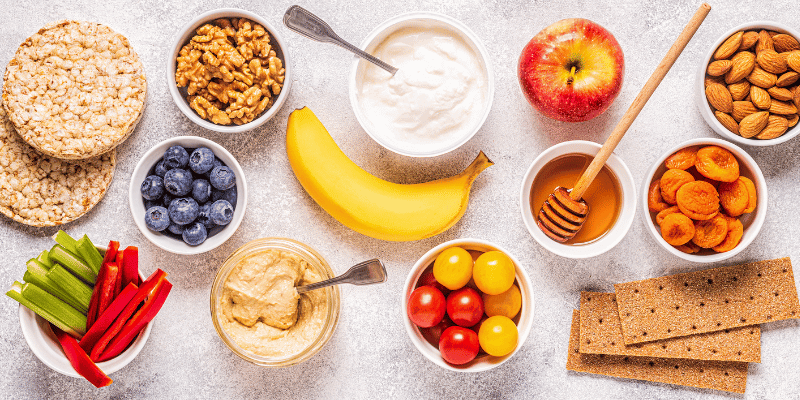
The first thing that comes into mind when we think of snacks is chocolate, pastries, candies… These options don’t add anything to the keto diet.
Even so, keto recipes are a great alternative to processed snacks. The best keto snacks — besides cheese, oilseeds, and red fruits — can be:
- Parmesan crisps
Easily done by placing freshly grated parmesan cheese and some spices onto a baking sheet. Bake it for 4-5 minutes until golden brown. Let them cool completely and they are ready to go!
- Chocolate Energy Balls
If you need some chocolate in your day, consider this recipe with cocoa powder, medjool dates, raw almonds, and cashews.
By processing all these ingredients together, rolling them into small balls, and refrigerating them; you’ll have a perfect freezer-friendly snack for your day.
- Strawberry smoothie
Yet low in carbs, strawberries are rich in fiber. For that smoothie, you just need to add milk, yogurt — or sugar-free condensed milk — and strawberries to the blender. And, just like that, you’re ready to go!
- Brownies
For the sugary palate, we also have a ketogenic version of delicious brownies.
You’ll just need some almond butter, bananas — or pumpkin puree or unsweetened applesauce — cocoa powder, chocolate or vanilla protein powder, and, if you wish, some dark chocolate.
Mix all the ingredients in a food processor or a high-speed blender until fully combined. Now just add your chocolate chips and bake the cookies for 15-20 minutes. Cut it as you wish and enjoy!
With the right ingredients, you can make a simple food into a booster for your immune system.
Also written by Mark Sisson, the “Keto Reset Diet” brings nutrient-dense ketogenic recipes from leading health and gourmet experts to bring your new diet a richness of flavors and textures.
If you feel an interest in going deeper into the subject, I highly recommend this book.
However, keep in mind: to plan a diet using these parameters, you must consult with a health care agent for a better adaptation to your body.
Besides, consider that not every diet is thought of on a long-term basis. Even aligning supplements with the diet, know that this diet does not apply in the long-term, but for the short to medium-term.

